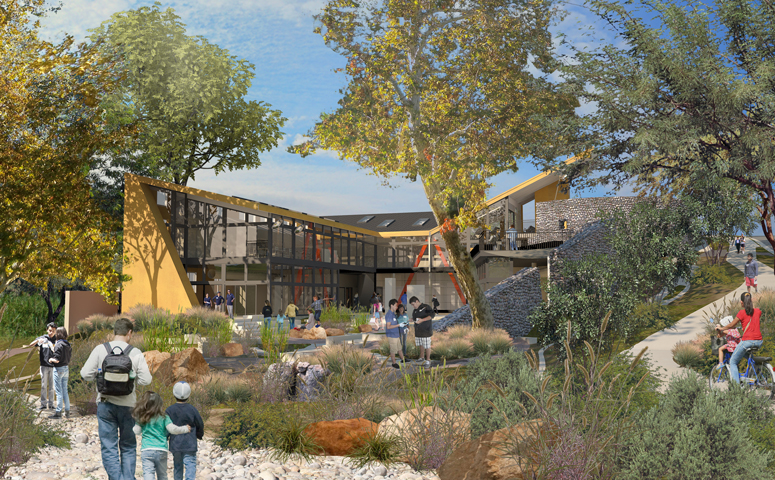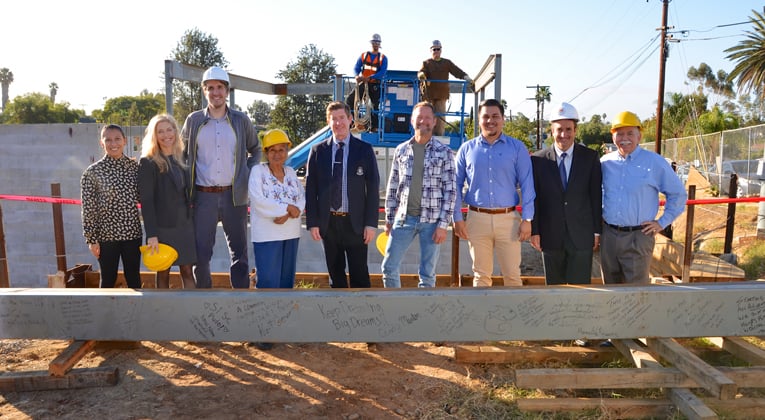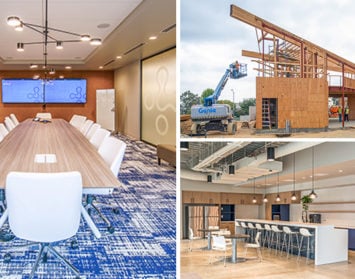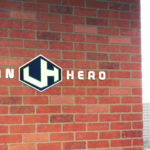Some dedicated philanthropic veterans recently met at the Hughes Marino Headquarters in San Diego for a passionate discussion about the successes and struggles of a shared journey. Sitting around the conference room table were Shara Fisler and Ted Griswold with the Ocean Discovery Institute (ODI), and Dr. Alan Hargens, Corey McCleland and Greg “Buc” Buchanan from the San Diego Junior Lifeguard Foundation.
ODI is halfway through construction of a 12,000-square-foot LEED Platinum Living Lab in City Heights, and the meeting fueled an impressive conversation and yielded invaluable insights. I took a sideline approach, added only a few quips here and there, and smiled while watching Shara and Ted remind me why Hughes Marino committed to helping ODI 10 years ago. My friends Dr. Hargens, Corey and Buc were all ears as they prepared to begin a large capital project, and this conversation focused on lessons learned by ODI.

Shara and Ted expressed the importance of a united vision. Then the conversation evolved into an emotional focus on the team members, and shifted to how capital campaigning is, “kind of awesome,” according to Shara. Spanning nearly a decade of experience on the project, here are four key pieces of advice Shara and Ted gave for building a successful, passionate and philanthropic organization.
Build a Team that Becomes a Family
Surround yourself with passionate and impactful people, then trust them. Passion plays a vital role in the process. Your team can anticipate one thing will happen: rejection. How your team responds to rejection will play a vital role in the success of the organization. If your team members accept the first rejection as the final answer, then maybe they’re not as passionate as the process demands. It’s all part of the learning process and, essentially, what builds a successful family-like team.
Have a Vision
Surrounding yourself with impressive and impactful team members is great, but also meaningless if you don’t have a united vision, or set of core values, to act as the organization’s moral compass. I can tell you from personal experience, the Hughes Marino Core Values have been a driving force for a company that acts as a family. In another sense, the united vision, or core values, can help the organization embrace a collective agreement that exudes passion and accountability. “Before you engage in any type of community outreach, knowing who you are and why someone should care about your organization is paramount,” Shara says. “If you fail to be a united front, then the community will fail to see why they should care about who you are and why they should give to your purpose.”
Show Grit
“No does not mean no – no actually means, “How?” Ted says. Specific to special grant opportunities: If rejected, it often means you need to take a step back to strategize a new approach. “Never accept the first rejection as the final answer,” Ted adds. “Instead, ask yourself and consider: How can we make the proposition work?” For ODI, it meant building unique, ground-breaking partnerships that brought the public and private entities together to support its goals. Ultimately, ODI and the donors saw that together they could improve education, create opportunities for youth and families, and protect the environment. None of this would be possible if ODI didn’t show grit.
Vision + Grit = Capital Campaigning
I wish I was the clever mind that invented this equation, but credit goes to Shara, a recent recipient of the CNN Hero Award. In addition to running the impressive ODI, Shara also embodies the passion required to impact thousands of lives. The capital campaigning process begins with a target budget, but is fueled by a team’s united vision and grit to persevere. “One lesson we learned relates to restricted donation versus general donation,” she says. “For example, on one end you have a donor who will give you a certain amount for a specific item, such as solar panels—that’s a restricted donation. On the other hand, another donor may donate the money for truly any purpose—that’s general donation. Being incredibly respectful and thoughtful as to how you plan to capital campaign is so important, you have to be respectful of everyone else’s passion and meet the funding requirements.”
At the end of the day the collective is there to help those in need; however, running a successful philanthropic organization is akin to running other kinds of organizations. You need a united vision or set of core values to adamantly stand behind, you need to surround yourself with impactful, passionate and trustworthy colleagues and you need to accomplish goals in a creative, respectful and persistent manner. So, if your organization is considering a capital campaign for a new facility or headquarters, give our team a call to discuss how we’ve helped numerous philanthropic organizations create their goals and understand the entire entitlement, design and permitting, and construction process. We aren’t just here to help; we would love to help.
Hughes Marino’s industry leading Construction Management team has unmatched expertise in every type of commercial building project from tenant improvements to ground-up build-to-suits. With decades of experience in California and beyond, our project managers, engineers and LEED APs offer practical insights for the construction management professional.











